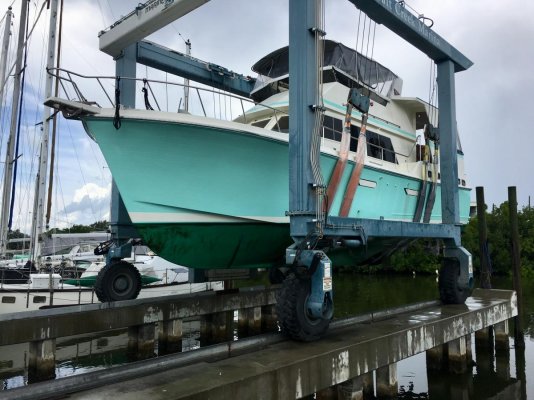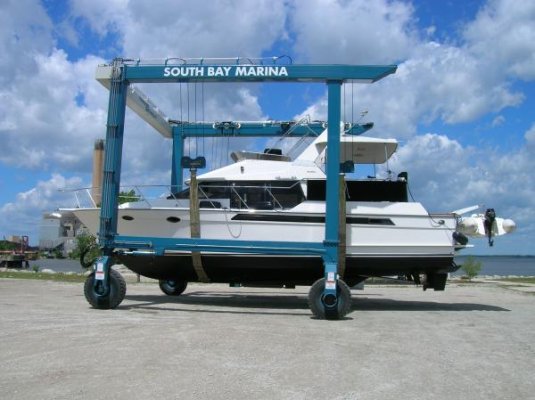Steve91T
Guru
- Joined
- Sep 12, 2016
- Messages
- 898
- Location
- USA
- Vessel Name
- Abeona
- Vessel Make
- Marine Trader 47’ Sundeck
I am (or was.... thanks to Covid) also trawler shopping. I've always figured I'd want a single because, coming from fullish keel sailboats, I'm used to the prop, running gear, and rudder being protected. Most twins I've seen have the shafts, props, and rudders kind of hanging out in the breeze. I do see a number of advantages with twins (and it increases my buying options), and I know many boats successfully cruise with the arrangement but it would make me nervous.
I did see a Cheoy Lee LRC with protected twin running gear but at around 58' way out of my size range.
Anyway, all that to say would you be able to share a photo of your protected twin arrangement? I did try to look one up online but was only able to find the more usual setup (a random MT 47):
Here’s a pic that I took during the survey.
The newer MT’s (1990’s) were narrower and didn’t have a keel.



